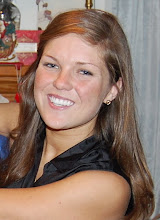
This week, Duke University’s writer-in-residence, Howard Norton, visited my creative writing class. When asked about habits as a writer, he revealed that he often draws inspiration from the performances and one-liners found in film noir movies shown on the Turner Classic Movie channel late at night.
And his certainly work reflects this: in the paragraph he read to us, the narrator announces he has murdered someone within the first few sentences.
This is the essence of film noir: the celebration of crime, love, death—the extremes and dark “noir” sides of human nature. All of these are wildly present in Jacques Tourneur’s Out of The Past (1947), a film traditionally thought to be exemplary of all the genre has come to represent.
But it is not only plot or thematic elements that have contributed to this film’s being classified as a classic of the “film noir” genre. There are also cinematic factors that cause it to be associated with the genre, like the usage of shadow imagery and low lighting.
Thomas Schatz, by applying Ferdinand de Sassaure’s canonical linguistic explanation of communication to the art of film, makes the claim that these are the “words” of the “language” spoken by a genre.
He proposes that film genres speak in particular languages, using various techniques and conventions that have become identifiable to anyone with a fair amount of movie-watching under his or her belt. “To discuss the Western genre is to address neither a single Western film nor even all Westerns, but rather a system of conventions which identifies Westerns films as such.” So certain elements convey the intent of certain films to belong in certain genres the same way certain words belong to the vocabularies of different languages. If you see a man on a horse in front of a desert scene you know you are watching a Western just as when you hear a person say “bonjour” it is safe to presume he or she is will be speaking French.
He raises this point to assert that, oftentimes many viewers come to see all genre films as the same--at the mention of a genre, they picture a montage of images from many films that fall into that category. However, he reminds us of the individuality of each film as its own separate entity. “We should be careful though, to maintain a distinction between the film genre and the genre film.” That is to say, even if many films speak in the same singular language of a particular genre, each has something unique to say.
In the case of Out of the Past, it may seem slightly difficult to see past the multiple love triangles, betrayal, murder, bribery and nighttime visuals that constitute the film’s oh- so “noir” soul. However, I think there is something very interesting to be drawn out of the character of Jimmy's deaf handyman.
The way his disability is portrayed struck me as very dark, as if there was something eerie or supernatural about it. He never smiled, he constantly wore a cryptic expression, he slipped in an out of secret spaces. He seemed to be an omnipresent, omniscient observer--a silent recorder of information. In this way, it seemed to me that his character fulfilled the same roll as the camera, constantly capturing the sinfulness of human nature.
While the customs of film genres provide building blocks for films to effortlessly convey bits of information to viewers, the success of each individual genre film depends on its ability to create its own meaning beyond these internalized conventions.

